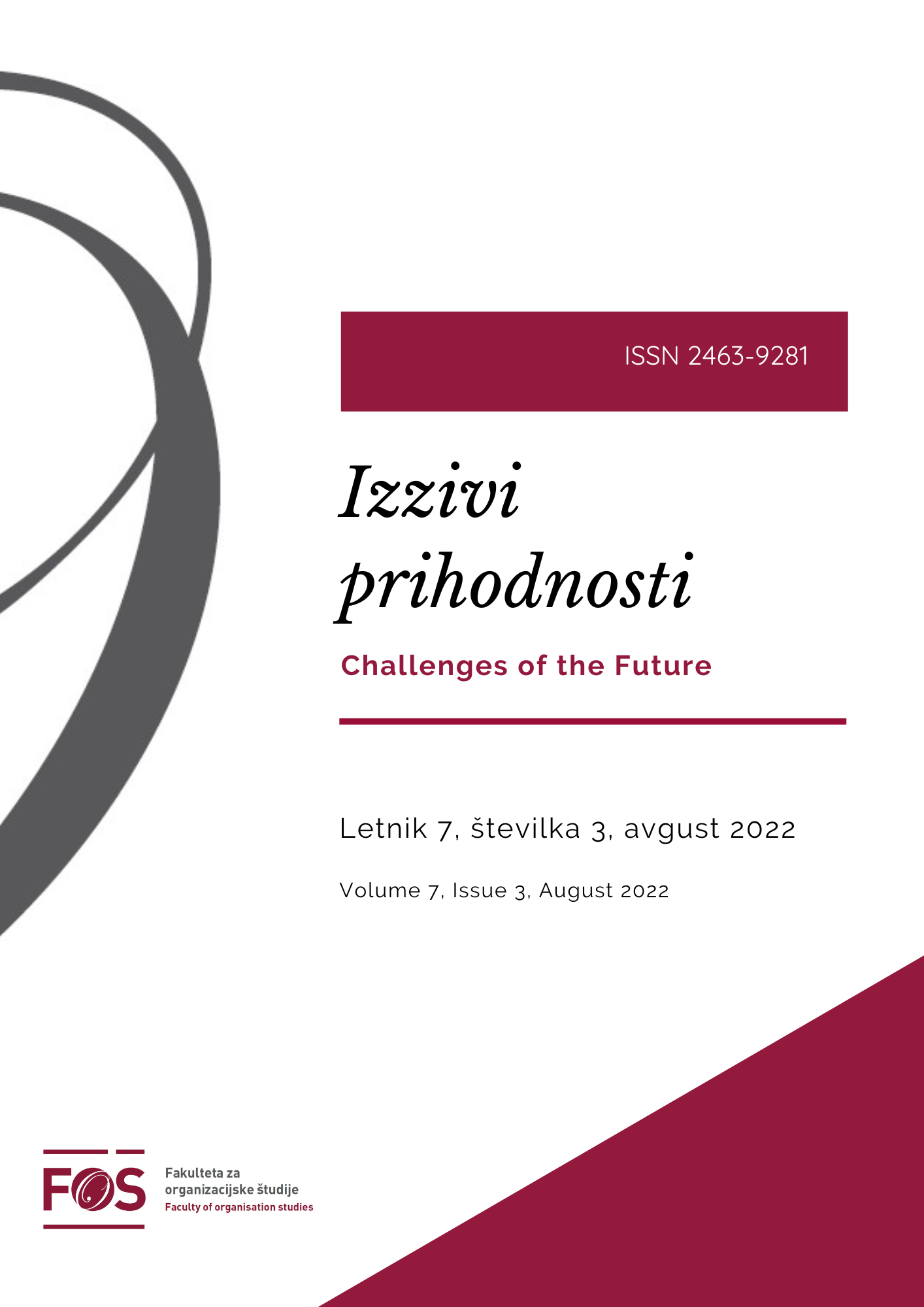Manifestations of Islamophobia during COVID-19
DOI:
https://doi.org/10.37886/ip.2022.007Keywords:
COVID-19, Social media, Physical attacts, Systematic review, Hate speech, islamofobijaAbstract
Background and Originality: Did the level of Islamophobia increase during the COVID-19, and in what forms did Islamophobia manifest during the mentioned period mentioned? This article aims to find out, through a systematic review, how Islamophobia has manifested during the COVID-19 and in in what forms did Islamophobia manifest during the mentioned period. The originality of the research is reflected in a thorough systematic review of the available literature in the field of Islamophobia at the time of COVID-19. The article's topic, which is relatively new and consequently under-researched, focused on examining the rise and manifestations of Islamophobia during the COVID-19 to identify relevant societal challenges to the emerging challenges.
Method: A systematic review of Islamophobia during the COVID-19 was conducted in the following databases: Scopus, ProQuest Dissertations & Theses Global, Web of Science, Google Scholar, Base (Open Access), Springer Nature, JSTOR, ScienceDirect, SAGE, Wiley Online Library, and Emerald. Additional articles from other sources were identified by examining reference lists of studies found during database searches.
Results: Based on inclusion and exclusion criteria, our systematic review found 19 articles published in English between January 2020 and January 2022. We found that the level of Islamophobia jumped during the COVID-19 and that Islamophobia shifted to online media during the strict lockdown but remained present in physical form.
Society: Although the implications of the research for organizations are indirect, knowledge of the manifestations of Islamophobia during the COVID-19 may provide employers with an understanding of the plight of Muslims employed in organizations and enable them to take specific measures to alleviate the psychological distress of their Muslim employees.It is important for society to work for peaceful coexistence and mutual understanding in a pluralistic, democratic society and to make additional efforts to reduce the level of Islamophobia (in whatever form), hate speech and hate crimes against Muslims and to condemn all forms of discrimination and persecution against Muslims.
Limitations / further research: As a limitation of our study, we must point out the relatively small amount of relevant literature on the studied topic, which is due to the relatively short period of study of Islamophobia in the COVID-19 period. We suggest that for further research, researchers should also focus on the manifestation of Islamophobia during the COVID-19 period in physical form, as the various research studies that we were able to find and evaluate for this systematic review focused mainly on the online implications of Islamophobia.
References
Abbasi, M. U. R., Saleem, H. H., Ejaz, T., Ullah, S., H. Mushtaq, H. M. & Abbasi, M. (2021). The Innovative Role of the Islamic World to Counter the Phenomenon of Western "Islamophobia" during the Post-Corona Era. İlköğretim Online 20(3), 326–340. doi: 10.17051/ilkonline.2021.03.32
Abdelkader, E. (2017). A Comparative Analysis of European Islamophobia: France, UK, Germany, Netherlands, and Sweden. Retrieved from: https://escholarship.org/content/qt870099f4/qt870099f4.pdf
Advisory Council on Youth (CCJ). (2021, September 21). Statement by the Advisory Council on Youth (CCJ) on European Action Day Against Islamophobia. Retrieved from https://www.coe.int/en/web/youth/-/european-action-day-against-islamophobia
Ahuja. K. K. & Banerjee, D. (2021, January 22). The “Labeled” Side of COVID-19 in India: Psychosocial Perspectives on Islamophobia during the Pandemic. Frontiers in Psychiatry 11. doi: 10.3389/fpsyt.2020.604949. Retrieved from https://www.frontiersin.org/articles/10.3389/ fpsyt.2020.604949/full
Al- Qazzaz, K. (2020, October 1). Islamophobia is on the rise during COVID-19. Policy Options Politiques. Retrieved from https://policyoptions.irpp.org/magazines/october-2020/islamophobia-is-on-the-rise-during-covid-19/
Awan, I., Carter, P., Sutch, H. & Lally, H. (2021) Covid-19: What are the Drivers of the Islamophobic Infodemic Communications on social media? Project Report. Birmingham: Birmingham City University.
Awan, I. & Khan-Williams, R. (2020). Coronavirus, Fear and How Islamophobia Spreads on Social Media. Research Briefing Report 2020. Retrieved from https://antimuslimhatredworkinggrouphome.files.wordpress.com/2020/04/research- briefing-report-7-1.pdf
Awan, I. & Zempi, I. (2020). A Working Definition of Islamophobia: A Briefing Paper– November 2020. Retrieved from https://www.ohchr.org/Documents/Issues/Religion/Islamophobia- AntiMuslim/Civil%20 Society%20or%20Individuals/ProfAwan-2.pdf
Bakry, M., Syatar, A., Hajar, I. H., Mundzir, C., Arif, M. & Amiruddin, M. M. (2020). Arguing Islamophobia during COVID-19 Outbreaks: A Consideration Using Khuṣūṣ Al-Balwᾱ. International Journal of Criminology and Sociology 9, 2757–2765.
Banaji, S. & Bhat, R. (2020, September 30). How anti-Muslim disinformation campaigns in India have surged during COVID-19. The LSE Blog. Retireved from https://blogs.lse.ac.uk/covid19/2020/09/30/how-anti-muslim-disinformation-campaigns-in-india-have-surged-during-covid-19/
Bayrakli, E., Hafez, F. (2015): European Islamophobia Report. Turkey: SETA. Retrieved from http://www.islamophobiaeurope.com/reports/2015/en/EIR_2015_NORWAY.pdf
Bleich, E. (2012). Defining and Researching Islamophobia. Review of Middle East Studies, 46(2), 179–188.
Cerase, A., D’Angelo, E. & Santoro, C. (2016). Monitoring racist and xenophobic extremism to counter hate speech online: Ethical dilemmas and methods of a preventive approach, Freedom from Fear, 2016(11), 111–119.
Chandra M, Reddy, M., Reddy M., Sehgal S., Gupta S., Buduru A.B., Kumaraguru P. (2021). "A Virus Has No Religion": Analyzing Islamophobia on Twitter during the COVID-19 Outbreak. Retrieved from: https://www.scopus.com/record/display.uri?eid=2-s2.0-85114795427&origin=resultslist&sort=plf-f&src=s&st1=covid-19+islamophobia&sid=8493fb81c519964541113f85900bff2b&sot=b&sdt=b&sl=36&s=TITLE-ABS-KEY%28covid-19+islamophobia%29&relpos=1&citeCnt=0&searchTerm=
Charter for Compassion International. (2015). Islamophobia Guidebook. Charter for Compassion. Retrieved from http://www.charterforcompassion.org/images/menus/ReligionSpiritualityInterfaith/ IslamophobiaGuide/PDFS/IslamophobiaGuide.pdf
eMORE. (2020). An Overview on Hate Crime and Hate Speech in 9 EU Countries. Retrieved from https://www.rissc.it/wp-content/uploads/2020/06/AN_OVERVIEW_ON_HATE_CRIME_AND_ HATE_SPEEC.pdf
Fadiga, H. M. (2021). Islamophobia in France: A case study of Islamophobic practices and racial discrimination in face of the global pandemic of Covid-19. Retrieved from: https://www.proquest.com/pqdtglobal/docview/2604898735/fulltextPDF/DA8EDEA5DCB74911PQ/1?accountid=31309
Gao, Z. (2021, October 4). Sinophobia during the Covid-19 Pandemic: Identity, Belonging, and International Politics. Integrative Psychological and Behavioral Science. Retrieved from https://link.springer.com/article/10.1007/s12124-021-09659-z
Hamead, T. (2020). Veils, Plagues, and Burials: The Blighted Sri Lankan Muslim Body. Retrieved from: https://www.proquest.com/pqdtglobal/docview/2423876504/ DA8EDEA5DCB74911PQ/3?accountid=31309
Hoarau, M. & Sasnal, P. (2013). The Rise of Islamophobia in Europe. Retrieved from: https://www.files.ethz.ch/isn/164842/Bulletin%20PISM%20no%2056%20(509),%2027%20May%202013.pdf
IFSW Human Rights Commission. (2021, February 4). IFSW HRC Highlights Concerns on Increasing Islamophobia. IFSW. Retrieved from https://www.ifsw.org/ifsw-hrc-highlights-concerns-on-increasing-islamophobia/
Ivić, S. & Petrovič, R. (2020). The Rhetoric of Othering in a Time of Pandemic: Labeling COVID-19 as a ‘Foreign Virus’ in Public Discourse. Kultura Polisa 17(43), 421–433.
Javed, R.T., Usama, M., Iqbal, W., Qadir, J., Tyson, G., Castro, I. & Garimella, K. (2021, November 15). A deep dive into COVID-19-related messages on WhatsApp in Pakistan. Social Network Analysis and Mining 12(5). Retrieved from https://link.springer.com/article/10.1007/s13278-021-00833-0
Kallis, A. (2015). Islamophobia in Europe: The radical right and the mainstream. Retrieved from: https://www.researchgate.net/publication/311935510_Islamophobia_in_Europe_ The_radical_right_and_the_mainstream
Kanika K. A. & Banerjee, D. (2020). The “Labeled” Side of COVID-19 in India: Psychosocial Perspectives on Islamophobia during the Pandemic. Retrieved from: Frontiers | The “Labeled” Side of COVID-19 in India: Psychosocial Perspectives on Islamophobia During the Pandemic | Psychiatry (frontiersin.org)
Lambert, R. & Githens-Mazer, J. (2010). Islamophobia and Anti-Muslim Hate Crime: UK Case studies. London: European Muslim Research Center and University of Exeter.
Lenzner, M. (2021) Xenophobia, Islamophobia, Antisemitism, and Racism in Germany, Austria, and the Netherlands. Geneva: Geneva International Centre For Justice. Retrieved from https://www.gicj.org/images/Xenophobia_Islamophobia_Antisemitism_and_Racism_in _Germany_Austria_and_the_Netherlands.pdf
Lucini, B. (2021). Dismantling Prejudices on Muslim Communities in Italy in Times of Pandemic: not just Religious Fundamentalism. In N. Käsehage (ed.), Religious Fundamentalism in the Age of Pandemic (pg. 221–250). Bielefeld: transcript Verlag.
Mazham, R. (2020, May 13). CO20091 | Global Health Security: COVID-19 and Its Impacts – Disinformation: The Spreading of Islamophobia. RSIS. Retrieved from https://www.rsis.edu.sg/rsis-publication/icpvtr/global-health-security-covid-19-and-its-impacts-disinformation-the-spreading-of-islamophobia/
MEND. (2020, May). COVID-19 and Islamophobia Online. Retrieved from https://www.mend.org.uk › uploads › 2020/05
Merriam-Webster Dictionary. Islamophobia. Retrieved from https://www.merriam-webster.com/dictionary/Islamophobia.
Mitoma, G. & Marcus, A. S. (2020). Human Rights Before and After Covid-19: Getting Human Rights Education out of Quarantine. Journal of International Social Studies 10(2), 127–140.
Monash University (2020, July 30). Hate speech during COVID-19. The University of Queensland. Retrieved from https://polsis.uq.edu.au/event/5655/hate-speech-during-covid-19-monash-university
OIC Islamophobia Observatory. (2021). Islamophobia Monitoring. Retrieved from https://www.oic-oci.org/upload/islamophobia/2021/MB_August_2021.pdf
Panchal, N., Kamal, R., Cox, C., & Garfield, R. (2021, February 10). The Implications of COVID-19 for Mental Health and Substance Use. KFF. Retrieved from https://www.kff.org/coronavirus-covid-19/issue-brief/the-implications-of-covid-19-for-mental-health-and-substance-use/
Pašić, A. (2009). Perspektive in dileme muslimanskih skupnosti v kontekstu evropskih integracijskih procesov (Doctoral Dissertation). Ljubljana: Faculty of Humanities.
Perocco, F. (2018). Anti-Migrant Islamophobia in Europe. Social Roots, Mechanisms and Actors. Retrieved from https://www.scielo.br/j/remhu/a/cKtRfYWVyHHrTvHdvRQzYZj/?format=pdf&lang=en
Poole, E. & Williamson, M. (2021, July 2). Disrupting or reconfiguring racist narratives about Muslims? The representation of British Muslims during the Covid crisis. Journalism. Retrieved from https://doi.org/10.1177/14648849211030129
Rajan B. & Venkatraman S. (2021). Insta-hate: An exploration of islamophobia and right-wing nationalism on instagram amidst the COVID-19 pandemic in India. Retrieved from: https://www.scopus.com/record/display.uri?eid=2-s2.0-85105541488&origin=resultslist&sort=plf-f&src=s&st1=covid-19+islamophobia&sid=8493fb81c519964541113f85900bff2b&sot=b&sdt=b&sl=36&s=TITLE-ABS-KEY%28covid-19+islamophobia%29&relpos=2&citeCnt=2&searchTerm=
Ramberg, I. (2004). Islamophobia and its consequences on Young People. Retrieved from: https://rm.coe.int/16807037e1.
Roche, G. (2020). The Epidemiology of Sinophobia. Retrieved from https://press-files.anu.edu.au/downloads/press/n6884/pdf/epidemiology_sinophobia.pdf
Rose, H. (2021). Pandemic Hate: COVID-related Antisemitism and Islamophobia, and the Role of Social Media. München: Institute for Freedom of Faith and Security in Europe.
RTVSLO (2019, August 8). "Po novem kazniv že govor ali zapis, ki sam po sebi predstavlja grožnjo ali žalitev", RTV.SLO. Retrieved from https://www.rtvslo.si/slovenija/po-novem-kazniv-ze-govor-ali-zapis-ki-sam-po-sebi-predstavlja-groznjo-ali-zalitev/496480
Shahid, H. J. (2020). The Pandemic of Islamophobia. Journal of the British Islamic Medical Association 6(2), 1–4.
Ushama, T. (2021). Islamophobia in India During The Covid-19 Crisis: A Surge Of Stigmatization, Vilification And Murder. Retrieved from: https://journals.iium.edu.my/shajarah/index.php/shaj/article/view/1227/453
Voloder, S. (2020, May 3). Islamofobija u vrijeme pandemije Covid-19. Aljazeera. Retrieved from https://balkans.aljazeera.net/teme/2020/5/3/islamofobija-u-vrijeme-pandemije-covid-19
Vox-Osservatorio italiano sui diritti (2020). La nuova Mappa dell’Intolleranza 5. Retrieved from http://www.voxdiritti.it/la-nuova-mappa-dellintolleranza-5/
Zalta, A. (2016). Islamophobia in Slovenia: national report 2016. Retrieved from: http://www.islamophobiaeurope.com/wp-content/uploads/2017/03/SLOVENIA.pdf
Zhang, Y. & Xu, F. (2020). Ignorance, Orientalism and Sinophobia in Knowledge Production on Covid-19. Retrieved from https://onlinelibrary.wiley.com/doi/pdf/10.1111/tesg.12441
Additional Files
Published
How to Cite
Issue
Section
License
Copyright (c) 2022 Maja Pucelj

This work is licensed under a Creative Commons Attribution-ShareAlike 4.0 International License.
![]()








